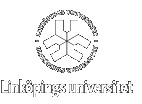Halvledarteknik
och tillverkning
Semiconductor devices and Microfabrication
TNE058
Information
Even the most advanced semiconductor chips are built
of few basic building blocks such as diodes and transistors. In this course the
student acquires the necessary knowledge to understand how these building
blocks function and what the physics is behind. The course starts with the
basic electrical and optical phenomenon in semiconductors, and continues with pn-diodes, Schottkey diode,
bipolar transistors, MOS transistors, Junction field effect transistors and
light emitting/absorbing devices.
The aim of the laboratory work is to understand the
physics of semiconductor devices such as diodes, transistors and solar cells.
For the labs the students will get some tasks but not
the method of how to solve the problems. A big part of the laboratory work is
done at home in finding a method on how to solve the problems, i.e. how to
combine different relation to extract the non measureable properties indirectly
and finally writing a lab report.
Extent
The course is 12 CP and
consists of about 40+24 h seminars ( no clear distinction between lectures and
tutorial) and 12h compulsory laboratory work. We recommend you to
participate in all lectures, Participation in some lectures in Microfabrication will give
you extra bonus. (These will be announced by the teacher in the classroom) .
The CP are: Written examination: 8 ECTS, Laboratory
work: 1 ECTS, written and oral presentation: 1 ECTS, Midterm short exam:2 ECTS, Optional assignments: 0 ECTS
Oral assignment: Every group of 2 students presents one
chapter of microfabrication for the class.
Participation in these presentations is compulsory for all students.
Literature
1) Semiconductor Devices, Basic
Principle, Jasprit Singh, John Wiley & Sons, 2001,ISBN 0-471-36245-X.
2)- Introduction to
Micro fabrication, Sami Franssila, John Wiley &
Sons, 2004,ISBN 0-470-85106-6.
Labs
Labs are done in groups of 2 students. The problems
are given to students about 2 weeks in advance. The students should find a
method for each problem and discuss that with the teacher 1 week before the
first lab. If you do not prepare this you won't be allowed to do the labs. The
experiment will take about 2 sessions (2x4 h) for most students. The students
should try to write the reports after the second session. The third and last
session is for complementary measurements and verification of your earlier
results.
Laboratory work requires compulsory attendance.
Note a big part of the Laboratory work is the
preparation. The labs in this course are different than labs of many courses at
G-level. In most courses at G-level you get a problem and a method and what to
measure and how perform the measurements. Here you get a problem to solve, you have to find a method, how to do the measurement
and how to extract the wanted parameter from your experiment.
Homework
There about 40 Homework problems
(from semiconductor devices), recommended that you solve and if you have
questions you can get help from the teacher. The home assignments are not
compulsory but these will help you to understand the subject. If you solve and hand your solutions to the teacher on due time you
acquire bonus. To get bonus you should also attend the lectures and
tutorials. Students not participating in the lectures will not get the bonus,
even if they work on home assignments.
The home assignment gives maximum of 4 cp. Due to the
workload not all problems for all students will be corrected. Om each set of home
assignment one to 3 problems (on random) will be checked. Again, due to the
large number of problems each week, individual feedback is not given. Feedback
is given as general comments in the classroom for problems where many students
had problem with a problem.
Examination
There is a final written exam in January,
there is a midterm short exam on Microfabrication.
You have to complete all parts of the course, written exam, dugga
(midterm exam), oral presentation, laboratory work and the lab report.
For dates and place of examination please see studentportalen, Note you have to register for the written
exam in advance.
SNABBLÄNKR(öppnas i nya
fönster)
![]()
Sidan uppdaterades senast: 2007-09-03
e-mail:
amiba25@itn.liu.se
phone +46 11 363337
Fax: +46 11 363270
Amir Baranzahi (PhD)
Senior Lecturer in solid sate electronics
and electronic manufacturing
Director of studies in Physics and
electronics
ITN,
Linköpings universitet
Campus
Norrköping
SE-60174
Norrköping
Sweden

